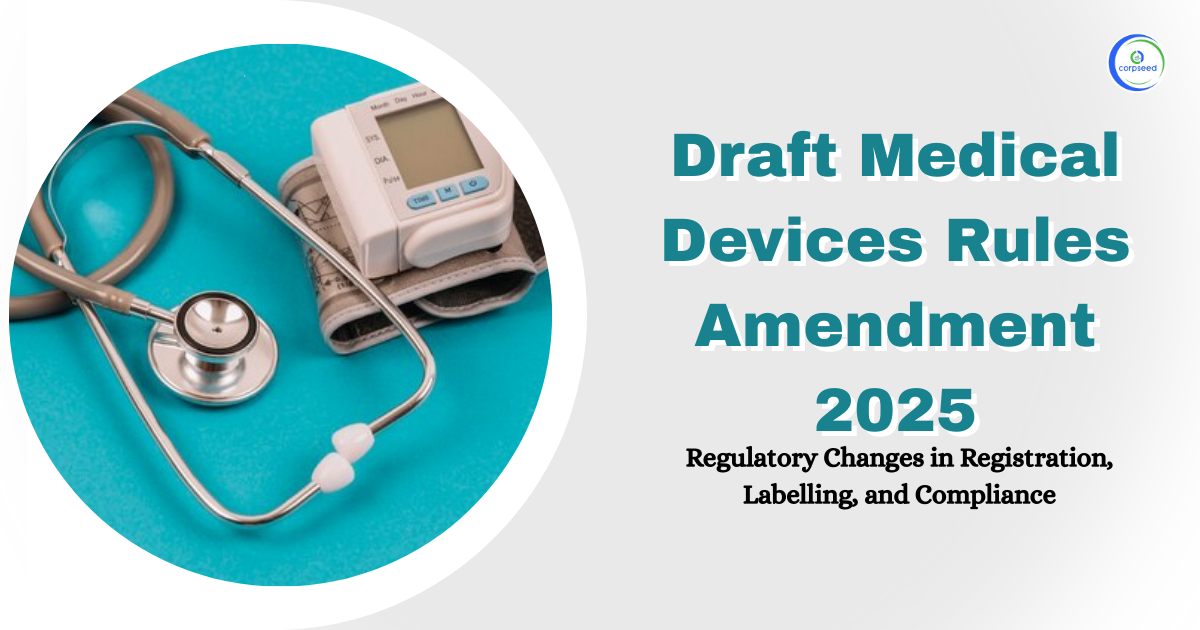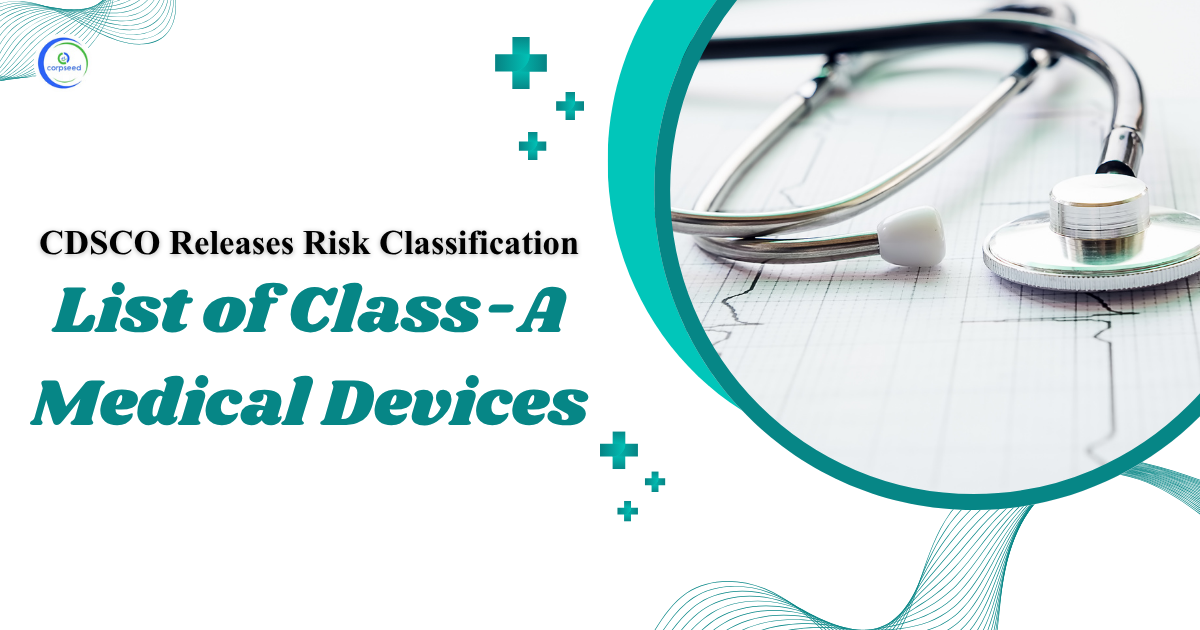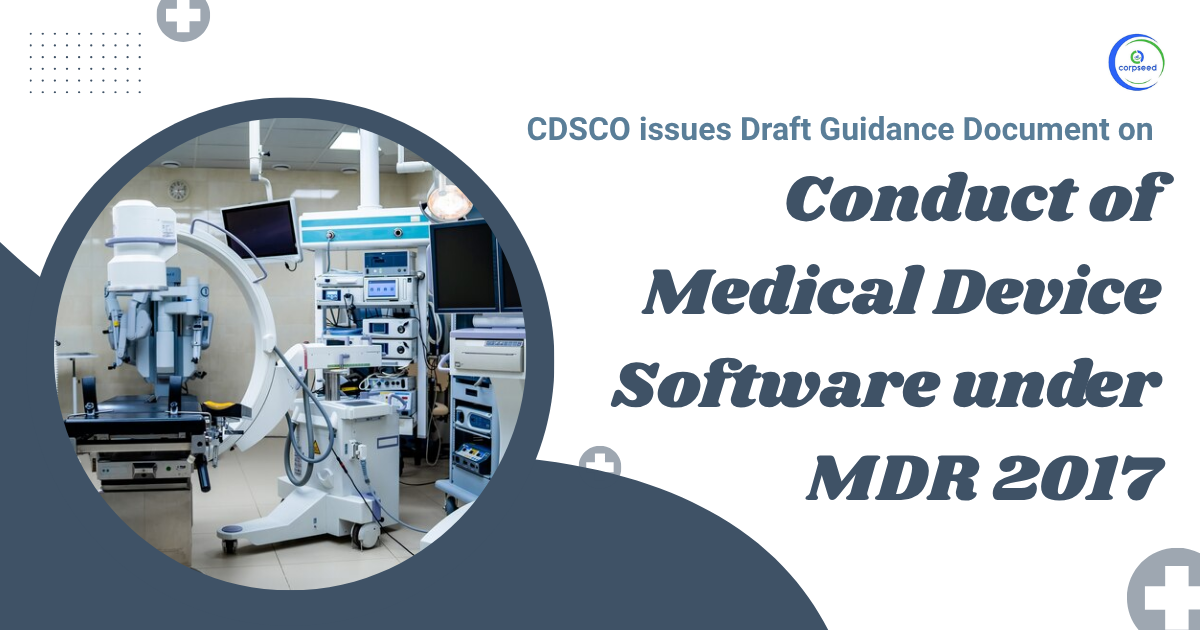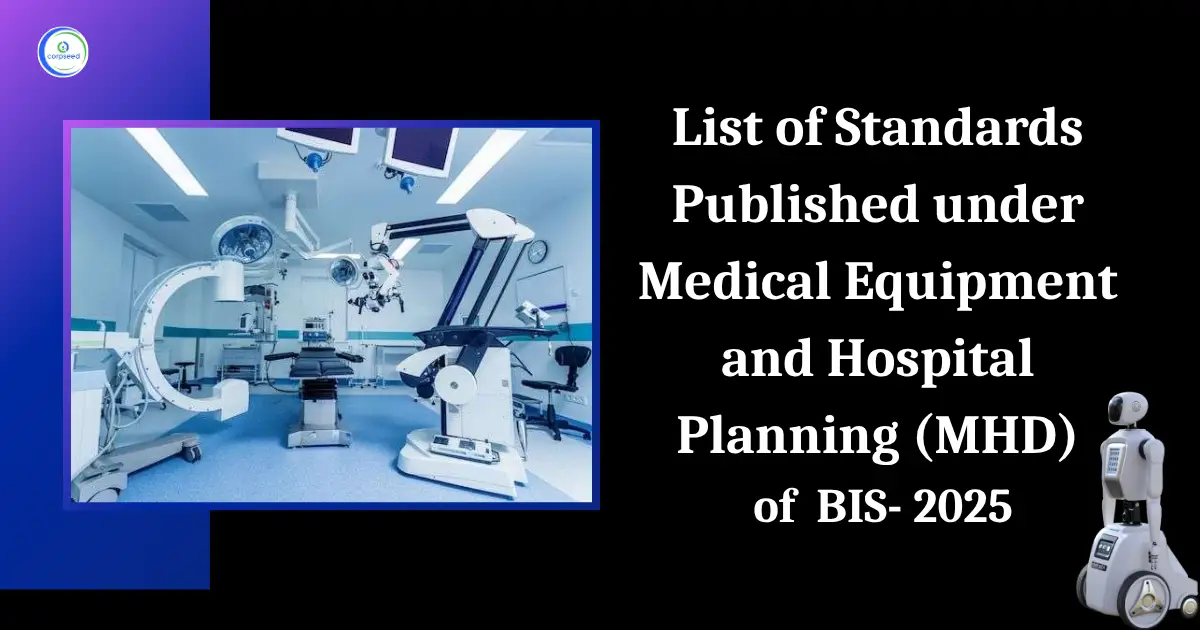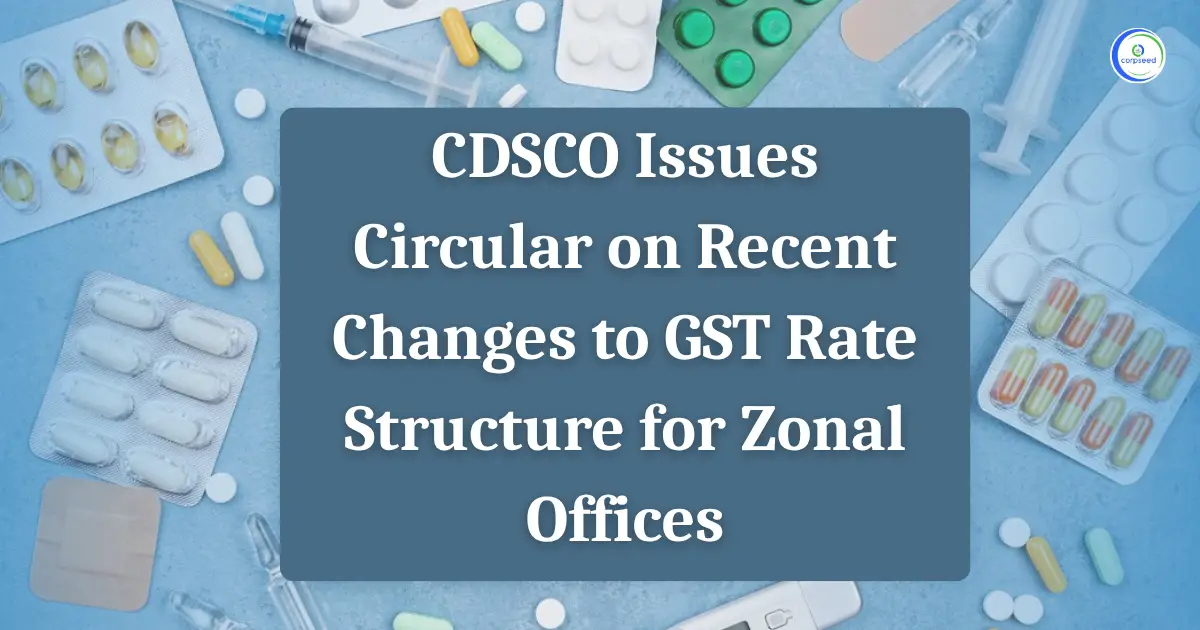Introduction: Manufacturing of Class C and Class D Medical Devices
The medical profession itself is a profession of utmost responsibility. This responsibility is not limited to only doctors but also extends to everybody else who is involved in the medical field in one way or the other; for example, hospitals, medical stores, pharmaceutical companies, ambulances etc. It is extremely important to regulate these entities with utmost care and hence the rules are made to deal with the manufacturers of medical devices. The same rules cannot be implemented on each kind of medical device because the thermometer may not be as harmful to somebody’s health as the joint implant. Therefore medical devices are categorized into different classes and rules are made accordingly. In this article, we will be discussing the required procedure to be followed by the manufacturers to sell and distribute their medical devices that fall under Class C and Class D.
Table of Contents
- Introduction: Manufacturing of Class C and Class D Medical Devices
- Applicable Rules
- Definition of Medical Device
- Classification of Medical Devices by CDSCO
- Difference Between Manufacturing, Loan and Test Licences
- Requirements for Manufacturing of Class C and Class D Medical Devices
- Documents Required for Manufacturing of Class C and Class D Medical Devices
- The Procedure of Obtaining Licence for Manufacturing of Class C and Class D Medical Devices
- Conditions of Manufacturing License of Class C & Class D Medical Devices
- Appeal After the Rejection of the Application for Manufacturing of Class C and Class D Medical Devices
- Licence Fee for Manufacturing of Class C and Class D Medical Devices
- Validity and Renewal of Manufacturing Licence of Class C and Class D Medical Devices
- Conclusion
--------------Blog Contact Form-------------
Applicable Rules
The Drugs and Cosmetics Act of 1940 delegates power to the Central Government to make rules for the regulation of medical devices. Exercising this power, the Central Government drafted and published rules to regulate the manufacturing, sale, and distribution of medical devices in 2016. These rules are called the Medical Devices Rules, 2017 and are in force since the first day of January 2018.
Definition of Medical Device
The term ‘medical device’ is defined under rule 3(zb) of the Medical Device Rules of 2017. Which states that a medical device is a substance used for in vitro diagnoses and surgical dressings, surgical bandages, surgical staples, surgical sutures, ligatures, and blood and blood component collection bags. Also, substances including mechanical contraceptives like condoms, intrauterine devices, and tubal rings are called medical devices. Disinfectants, insecticides and other devices as notified by the central government from time to time will be included in the definition of medical devices.
Read Our Blog: Permission to Import Medical Devices: Form MD-14 and Form MD-15
Classification of Medical Devices by CDSCO
Medical devices are divided into four classes for the convenience of making rules. These four classes are called Class A, B, C, and D. The following devices are included in these classes-
- Class A:- Low Risk
- Class B:- Low - Moderate Risk
- Class C:- Moderate - High Risk
- Class D:- High Risk
The parameters used to classify medical devices into these risk-based classes are provided in the first schedule of Medical Devices Rules, 2017. There are separate parameters to classify in-vitro and other medical devices. The intended use of the device is considered for the classification. If two separate devices are used in combination then both devices fall in the same class.
Difference Between Manufacturing, Loan and Test Licences
A manufacturing licence is given when a company is manufacturing devices on its own while a loan licence is given when it does not manufacture the devices on its own but outsources the devices from other manufacturers and then sells and distributes these devices under its own name in the market. Different applications have to be submitted for these two different licences. Test Licences are used to manufacture a sample for testing or to develop quality control measurements. This has to be submitted when obtaining the manufacturing license.
Requirements for Manufacturing of Class C and Class D Medical Devices
The following requirements have to be fulfilled by the applicant before he applies for the grant of a manufacturing license or loan license for Class C and D medical devices-
- The central licensing authority inspects the manufacturing site before the grant of the certification hence the manufacturing site has to be built as per the quality management system as specified in the rules.
- A competent technical staff is required to be appointed for the direction and supervision of the manufacturing unit.
- This technical staff should possess the following degree or diploma in relevant branches and subjects from a recognized university or institution-
- A degree in engineering
- A degree in pharmacy
- A degree in science
- A diploma in engineering
- A diploma in pharmacy
With a degree, two years of experience is required in the manufacturing and testing of medical devices while in the case of a diploma, four years of experience is required in the manufacturing and testing of medical devices.
- A competent staff should also be appointed for the direction and supervision of the testing activity of the manufactured medical devices. This staff shall possess a degree in engineering, pharmacy or science from a recognised university with relevant subjects.
- If the applicant is seeking the licence of manufacturing an investigational medical device or in-vitro medical diagnostic device, he should have taken permission from the Central Drugs Standard Control Organisation (CDSCO) under Form MD-27 or MD-29 before the application for the grant of licence is submitted.
Documents Required for Manufacturing of Class C and Class D Medical Devices
The following documents are required to get the manufacturing licence for Class C and Class D medical devices-
- Constitution Details
- Site or Plant Master File
- Device Master File
- Safety and Performance Checklist
- Test Licence
- Compliance Declaration
- Performance Evaluation Report (in-vitro diagnostic medical device)
If the applicant wants to import medical devices from a foreign country instead of manufacturing them in India, then he is required to submit the following documents with the application-
- Notarised Copy of Registration Certificate of Manufacturing Site
- Free Sale Certificate issued by the National Regulatory Authority of the respective country
- Notarised copy of Quality Management System Certificate
- Certified Copy of Valid Manufacturing or Wholesale Licence
- Latest Inspection or Audit Report (within last three years)
Read Our Blog: Import of Diagnostic Devices, Import Medical Devices in India - CDSCO
The Procedure of Obtaining Licence for Manufacturing of Class C and Class D Medical Devices
The central licensing authority in India is the Central Drugs Standard Control Organisation (CDSCO) headed by the Drugs Controller General of India (DCGI). It is responsible for the registration of manufacturers and granting them licences regarding Class C and Class D medical devices. If a manufacturing site wants to manufacture, sell or distribute any medical device, it has to take a licence for the same. If it is already licensed and wants to manufacture an additional medical device then a manufacturing licence has to be sought for that additional medical device. The step-by-step guide to obtaining the licence for the manufacturing of Class C and D medical devices is as follows-
- The applicant should submit an application to the central licensing authority through the online portal managed by CDSCO.
- He should use Form MD-7 or MD-8 depending on the need. Form MD-7 is for the grant of a manufacturing license while Form MD-8 is for the grant of a loan licence.
- The application should be accompanied by all the required documents and applicable fees.
- After the application is submitted, CDSCO may take assistance from an expert in the relevant field to verify the technical documents and decide on the application.
- The CDSCO is required to take a decision on the submitted application within forty-five days from the date of online submission.
- If the central licensing authority is not satisfied with the application and submitted documents then it can reject the application and inform the applicant electronically along with the reasons for rejection.
- If the central licensing authority is satisfied with the application and the documents submitted along with it then it can grant a loan licence under Form MD-10 if the manufacturing site is already licensed or proceed further and initiate the inspection process of the manufacturing site if the site is not yet licensed.
- The inspection team shall consist of a controlling officer and at least two medical device officers. The inspection shall be done within sixty days from the date of application.
- After the inspection of the manufacturing site, the inspection team shall forward a descriptive report to the CDSCO and the applicant.
- If the central licensing authority is satisfied with the inspection report, it can grant a manufacturing license under Form MD-9 or a loan licence under Form MD-10.
Conditions of Manufacturing License of Class C & Class D Medical Devices
When the government or any institution provides a licence to you, it is expected from you to follow all the rules, regulations and guidelines related to such a licence. The following conditions and compliances have to be followed after receiving the manufacturing licence of Class C & Class D medical devices-
- Production of licence if requested by a Medical Device Officer
- Informing the Central Licensing Authority (CLA) in case of a serious adverse event takes place
- Prior Approval from the CLA to implement a major or minor change
- Testing of each batch of manufactured product before release
- Withdrawal of a lot from the sale if any incompetency is found in that lot by the CLA
- Maintaining an audit or inspection book
- Maintaining samples of in-vitro medical diagnostic and invasive medical devices from each batch for reference
- Maintaining records of manufacturing and sales
- Shipping user manual with the medical devices
- Informing Central Licensing Authority if the manufacturing site is closed for more than thirty days
Appeal After the Rejection of the Application for Manufacturing of Class C and Class D Medical Devices
The CDSCO can reject the application for the grant of Class C and D medical devices manufacturing licences on the ground of valid reasons. The reasons may be non-fulfilment of required documents, not adhering to the process prescribed in these rules or any incompetency found during the inspection of the manufacturing site. If the applicant has received such a rejection, he can appeal to the central government. This appeal is required to be submitted within forty-five days from the date of rejection. The central government should give an opportunity to the appellant for being heard, order an appropriate inquiry and dispose of such an appeal within sixty days.
Licence Fee for Manufacturing of Class C and Class D Medical Devices
The fees for the licence to manufacture medical devices that fall under Class C and D are provided in the second schedule of Medical Device Rules, 2017. According to the schedule, the licence fee for manufacturing these devices is Rs. 50000 for one site and another Rs. 1000 is applicable for each distinct medical device that is being manufactured at that site. For example, if a company manufactures two medical devices at one site and other three medical devices on another site then the total applicable fee will be Rs. 53000 for the first site and Rs. 52000 for the second site. The retention fee of the licence is also the same as the fee paid the first time which has to be paid before the expiry of the licence.
Validity and Renewal of Manufacturing Licence of Class C and Class D Medical Devices
The registration done and licence acquired in this process remain valid for a period of five years. The licence holder has to pay the retention fee before the expiry of this licence to retain it for a longer period of time. If the retention fee is not paid by the licence holder and the licence is expired then he has to pay the retention fee as well as the late fee to renew the licence within the next one hundred and eighty days. The late fee will be two per cent of the retention fee for every month passed. And if the licence is not renewed for one hundred and eighty days after the expiry, it gets cancelled.
Conclusion
This was the whole process of getting a licence that you can use to manufacture Class C and Class D medical devices. Along with the procedure, we have tried to share every relevant knowledge that you may need to know while processing your application for the grant of license. Hope you will get benefitted from the information shared in this article. Considering the risk of using these medical devices, the authorities have prepared a lengthy and complicated procedure. And it is very important to have such a process to keep incompetent devices out of the market and save the consumers’ health as well as money.
This portion of the site is for informational purposes only. The content is not legal advice. The statements and opinions are the expression of author, not corpseed, and have not been evaluated by corpseed for accuracy, completeness, or changes in the law.
BOOK A FREE CONSULTATION
Get help from an experienced legal adviser. Schedule your consultation at a time that works for you and it's absolutely FREE.


